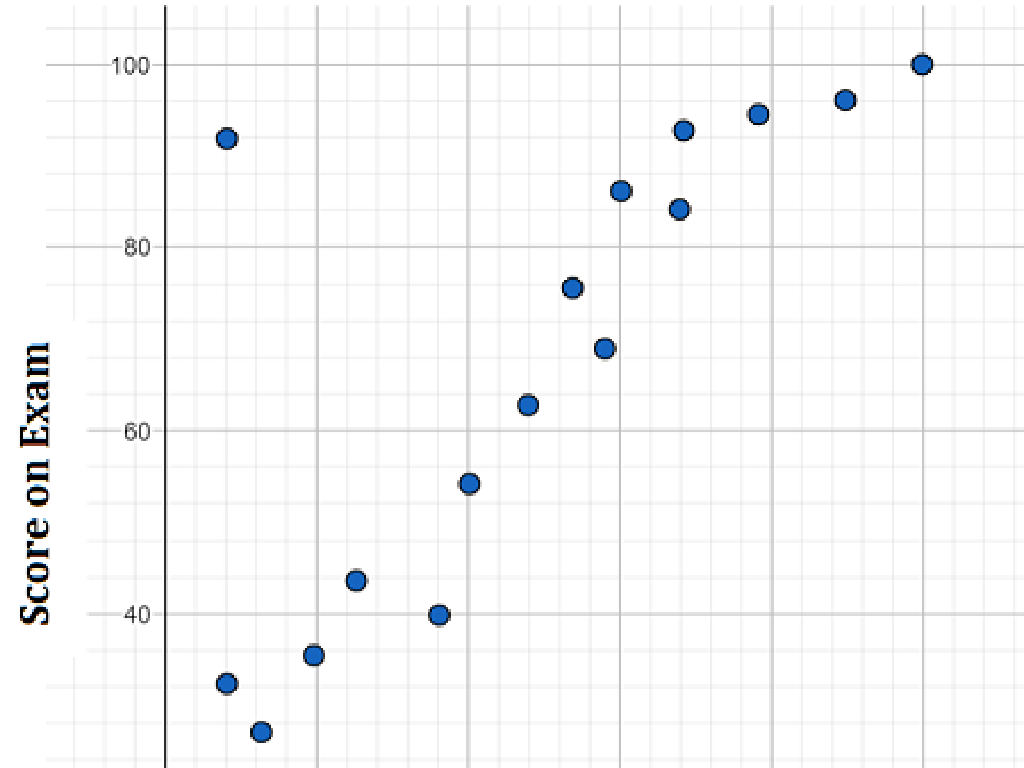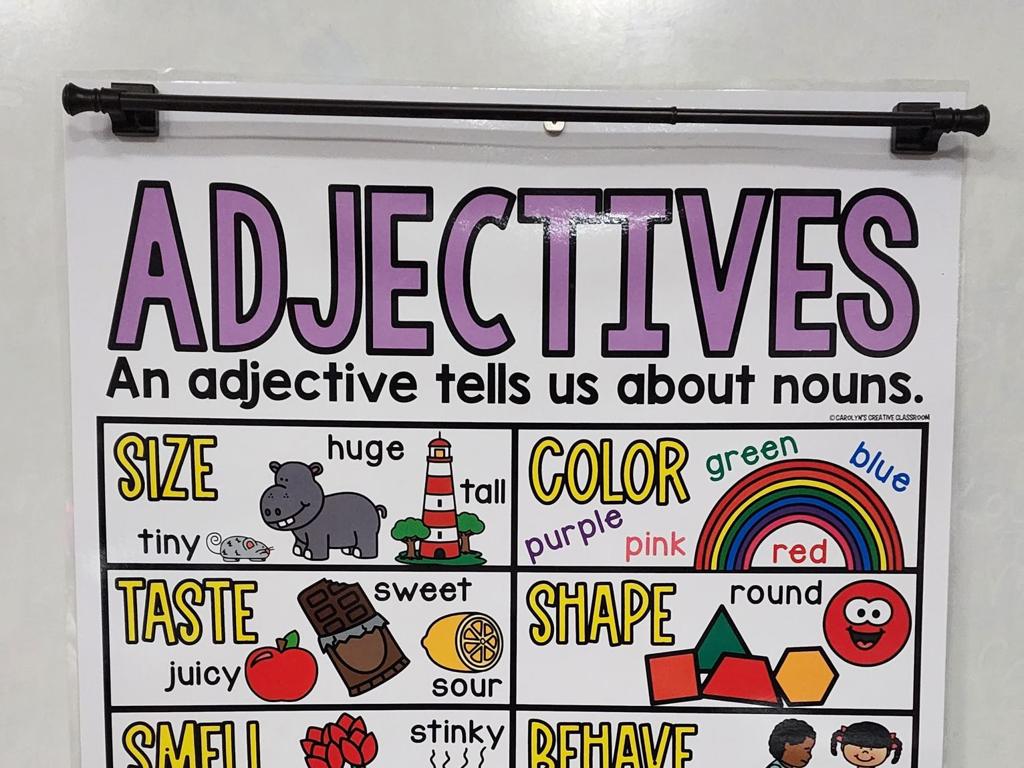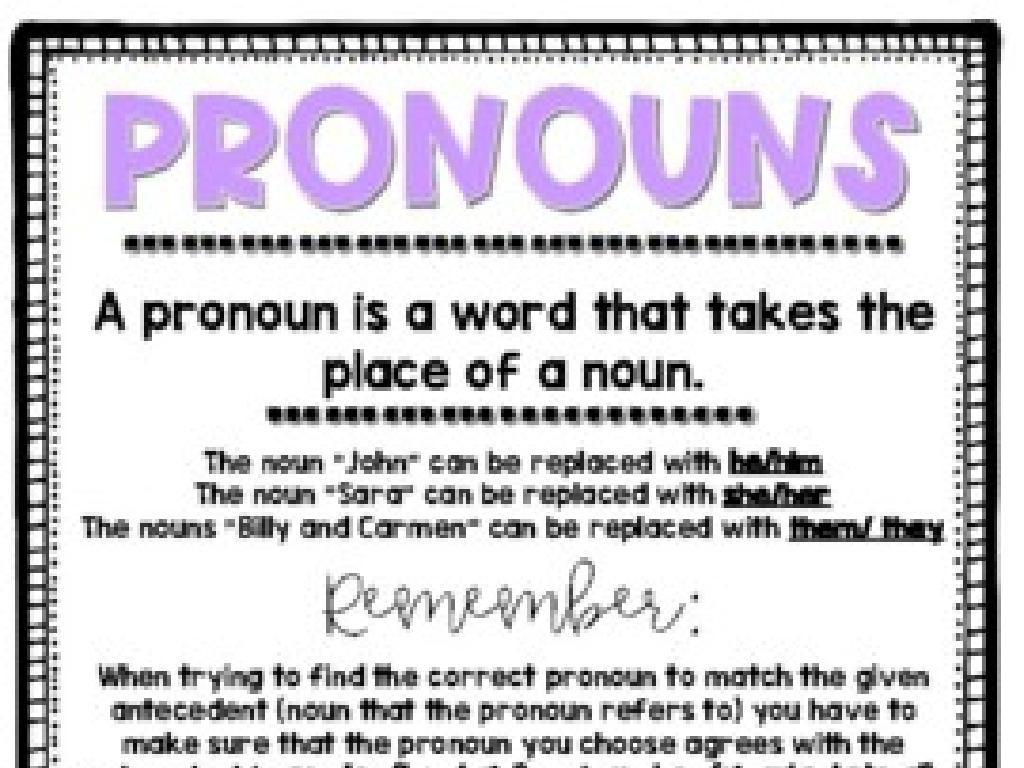Divide Integers: Find The Sign
Subject: Math
Grade: Sixth grade
Topic: Operations With Integers
Please LOG IN to download the presentation. Access is available to registered users only.
View More Content
Dividing Integers: Finding the Sign
– Understand what integers are
– Integers include positive, negative numbers, and zero
– Focus on dividing integers
– Division is splitting into equal parts or groups
– Learn to determine the result’s sign
– Rule: Positive ÷ Positive = Positive, Positive ÷ Negative = Negative, Negative ÷ Negative = Positive
– Practice with examples
– Example: 8 ÷ -2 = -4, -9 ÷ -3 = 3
|
This slide introduces the concept of dividing integers and focuses on determining the sign of the result. Begin by ensuring students have a solid understanding of what integers are. Then, explain that division is essentially the process of dividing something into equal parts. Emphasize the rules for determining the sign of the result when dividing integers: a positive number divided by a positive number yields a positive result, a positive number divided by a negative number yields a negative result, and a negative number divided by a negative number yields a positive result. Provide examples and encourage students to solve similar problems to reinforce the concept.
Understanding Integers and Their Signs
– Integers: Positive, negative, and zero
– Whole numbers without fractions or decimals
– Positive integers: 1, 2, 3, …
– Counting numbers starting from 1 upwards
– Negative integers: -1, -2, -3, …
– Counting numbers starting from -1 downwards
– Zero: Neither positive nor negative
|
This slide introduces the concept of integers to the students. Integers are the set of whole numbers that include all positive numbers, negative numbers, and zero. Positive integers are the numbers we use for counting, such as 1, 2, 3, and so on. Negative integers are their opposites and include -1, -2, -3, etc. Zero is a special integer that is neither positive nor negative. Understanding these basic concepts is crucial for students as they learn to perform operations with integers, such as division, where the sign of an integer affects the result. Ensure that students can identify and categorize numbers as positive, negative, or zero before moving on to more complex operations.
Dividing Integers: Finding the Sign
– Same signs give a positive quotient
– For example, (-6) ÷ (-3) = 2, because the signs are the same
– Different signs give a negative quotient
– For example, 6 ÷ (-3) = -2, because the signs are different
– Zero divided by an integer equals zero
– An integer cannot be divided by zero
|
When teaching division of integers, emphasize the rules for determining the sign of the quotient. If both integers have the same sign, whether positive or negative, the result is always positive. Conversely, if the integers have different signs, the quotient is negative. It’s crucial to highlight that zero divided by any integer results in zero, but division by zero is undefined and not allowed in mathematics. Use number line visuals and real-life scenarios to help students grasp these concepts. Practice problems should include a variety of positive and negative integers to ensure students can apply these rules independently.
Dividing Integers: Finding the Sign
– Positive ÷ Positive equals Positive
– Negative ÷ Negative equals Positive
– Positive ÷ Negative equals Negative
For example, 6 ÷ -3 equals -2
– Negative ÷ Positive equals Negative
For example, -8 ÷ 2 equals -4
|
This slide is focused on helping students understand the rules for determining the sign of the result when dividing integers. It’s crucial to emphasize that the sign of the quotient (result of division) depends on the signs of the numbers being divided. Two numbers with the same sign (both positive or both negative) will result in a positive quotient, while two numbers with different signs (one positive and one negative) will result in a negative quotient. Use examples to illustrate each rule and provide practice problems for students to apply these rules. Encourage students to remember these as ‘sign rules’ for division, which are similar to the rules for multiplying integers.
Let’s Practice Dividing Integers!
– Divide 12 by -3
– Positive divided by negative equals negative
– Divide -25 by -5
– Negative divided by negative equals positive
– Divide 0 by 6
– Zero divided by any number equals zero
– Divide -14 by 2
– Negative divided by positive equals negative
|
This slide is designed as a class activity to practice dividing integers and finding the sign of the result. For each example, students should apply the rule that division of two integers with the same sign results in a positive number, while division of two integers with different signs results in a negative number. Example 1 and 4 will result in negative answers, while Example 2 will result in a positive answer. Example 3 illustrates that any number divided by zero is zero. Encourage students to work through these examples individually or in pairs, and then discuss the answers as a class. This will help reinforce their understanding of the rules for dividing integers.
Class Activity: Integer Division Relay
– Form groups of 4 for the relay
– Receive a set of division problems
– Solve a problem, then pass the baton
Work collaboratively and check each other’s work before passing the baton.
– First team to finish wins!
Ensure accuracy along with speed to win.
|
This activity is designed to encourage teamwork and reinforce the concept of dividing integers and finding the sign. Each group of four will work together to solve a set of division problems involving integers. One student at a time will solve a problem before passing the ‘baton’ to the next teammate. This continues until the group has correctly completed all problems. The first team to finish with all correct answers wins. As a teacher, prepare diverse sets of problems with varying difficulty to cater to different skill levels. Monitor the groups to ensure that they are working collaboratively and that each member is participating. Offer guidance as needed and celebrate the efforts of all students. Possible variations of the activity could include mixed operations with integers, timed challenges, or incorporating real-life scenarios that require integer division.
Conclusion & Homework: Mastering Integer Division
– Review division sign rules
– Complete homework for practice
Practice is key to understanding integer division.
– Worksheet with 10 problems
Apply the rules to solve the worksheet problems.
– Check the sign!
The sign determines the answer’s positivity or negativity.
|
As we wrap up today’s lesson on dividing integers, it’s crucial for students to remember the rules for determining the sign of their answers. Positive divided by positive or negative by negative gives a positive result, while positive divided by negative or negative by positive gives a negative result. Encourage students to complete their homework diligently as practice is essential in mastering this concept. The provided worksheet with 10 division problems will help reinforce their understanding. Remind them to always check the sign of their answers to ensure accuracy. In the next class, we can review any common issues or questions that arise from the homework.






